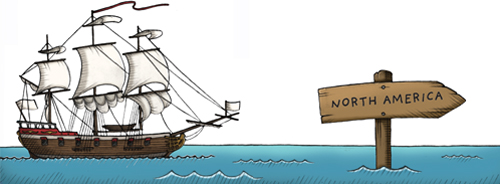
Like hundreds of thousands of other African slaves, Harriet Tubman’s grandmother was captured in West Africa and brought to the United States on a slave ship. The ships sailed from Europe, picked up a cargo of slaves in Africa, then sailed across the Atlantic and swapped the slaves for goods such as cotton or sugar. Conditions on the ships were so terrible that lots of people died on the journey.

CRAMPED CAPTIVES
The slave traders wanted as many slaves as possible on their ships, so they crammed them in as tightly as they could – just like any other cargo. The slaves were kept between decks, squashed together in spaces that, in the worst cases, might only be 60 centimetres high. They couldn’t stand up, and they might not even be able to sit up. The heat could become unbearable, and without enough water to drink people died of dehydration. The voyage across the Atlantic Ocean from Africa to the US lasted for months.
DEADLY DISEASES
With so many people squashed together without toilets or any way to keep clean, lots of slaves died from contagious diseases, such as dysentery, yellow fever and small pox. Scurvy, caused by a lack of vitamin C, was also common. Many crew members died too from such diseases.
REBELLIONS
The captive Africans sometimes tried to rebel, take over the ship and escape. Most of the rebellions happened before the ships set off from Africa, or not long afterwards. Only a very few were successful – the male slaves were often shackled to one another, and the slave ship’s crew was heavily armed.
YOUR CHANCES
If you were lucky, you might only have a one in ten chance of not surviving the voyage. On some slave ships, though, your chances of dying before the end of the voyage were one in three.
AN END TO SLAVERY
Slavery in the United States went on for hundreds of years before being banned by the US government in 1865, although an official apology for the treatment of slaves was not issued until 2008.